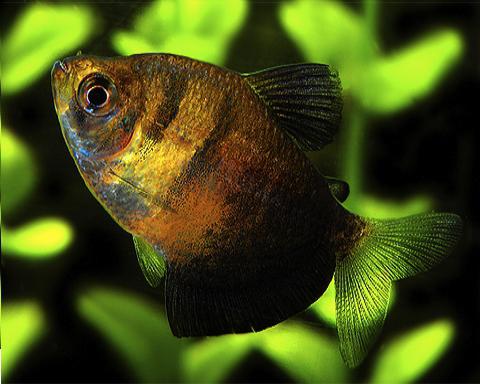Aquarium fish of thornsia comes from the haracin family. Its habitat in the wild is South America, more precisely, the Rio Negro and Paraguay. At home, fish belong to the category of predators. They were introduced to Europe for a relatively long time - in 1933. Quite unpretentious in its habitat and - unlike its wild relatives - peaceful, the aquarium fish of thorns enjoys well-deserved love among fans of the inhabitants of the underwater kingdom. Due to its undemanding nature, it is ideal for beginner aquarists for breeding.

Thorns grow up to five centimeters in length. They have a high body, as if squeezed from the sides, the shape of which somewhat resembles a rhombus. The back of the fish has a green-olive color. On the shiny silver scales of the body are three vertical stripes of black color, with the first of them as if dissecting the fish eye in half. The aquarium fish of thornsia also has a "special omen." Her anal fin is shaped like a skirt. For this, breeders often call thornsia a fashionista.
Recently, a peculiar tendency has appeared - to carry out artificial coloring of albino fish. With the help of all kinds of dyes, they are given bright shades, as a result of which a new look has appeared - the aquarium fish, thornsia “caramel”. True, this trait is not inherited; moreover, almost 90% of the colored individuals acquire their natural color over time.
What conditions are considered really optimal for the content of thorns? Since this fish is schooling, for 8-10 individuals a reservoir of at least 80 liters is required. Terence loves warm water, so its temperature must be constantly maintained at +26 degrees. If we talk about the level of rigidity, then 18 units are considered the best indicator. Acidity is necessary to maintain within 6-7 pH. Thorning is also required for oxygen, and therefore the reservoir must be equipped with devices for artificial aeration of water. The bottom in the aquarium should be sandy, and plants and decorations need to be planted and arranged so that the fish have free space for swimming. The best neighbors of thornsia are considered somics, guppies, gourams, pecilia and scalars.
As for feeding the fish, the owner of the aquarium will have no problems with this. Despite its predatory nature, thorns can perfectly do with a dry and high-quality artificial feed. True, this fish will not refuse from bloodworms, tubule makers, cyclops, both in live and frozen form.
The third generation is ready to reproduce offspring from eight months, the average life span (under appropriate conditions) is about four years.
Still amazingly beautiful are the aquarium thorns. The photos presented in the article clearly demonstrate their unusual attractiveness. And unpretentiousness and friendly disposition make these fish the desired inhabitants of any aquarium.